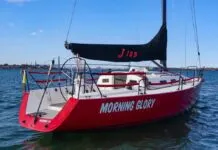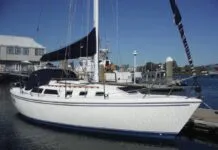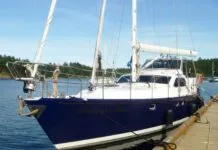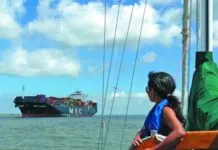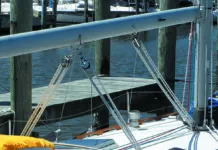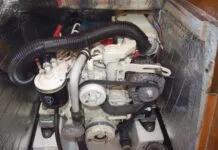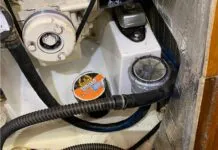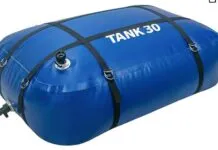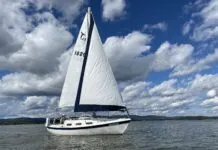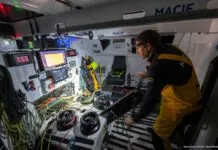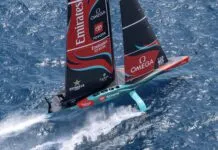My Tayana Vancouver 42s mast wires and cables were cut when the keel-stepped mast (63 feet) was removed. The wires include those for a tri-color with strobe, DataMarine 5000, VHF radio, radar, and nav lights. I am thinking of using a terminal box for the connections when the mast is replaced, but Im concerned about bilge moisture over time as well as the multiple wires in the cables. The wires exit the 288 mast just above the step. I tried to leave sufficient wire for a terminal box, but I don’t think a box outside the bilge is currently possible without additional wire extensions. Thoughts and recommendations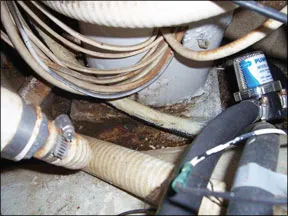
Mike Hirko
Tayana Vancouver 42
Gig Harbor, Wash.
Practical Sailor
editors have seen a number of older Tayana yachts that were fitted at the factory with non-marine grade (bare copper vs. tinned copper core) mast-light wires, that were green to the core with corrosion. If the light wires show signs of this, replace each nav light wire in the mast with new, marine-grade, tinned copper wire.If the 12-volt nav light wires are simply too short, then you can extend the wires using Ancor-brand heat shrink butt splices and some good 3M electrical tape. Bundle all of the wires together inside the mast, make a 1-inch diameter loop with the cable bundle, zip-tie the loop into shape, and extend the new cable ends out of the mast. The loop forms a moisture drip loop, the mast provides physical protection to the cable splices, and the new wire tails can be pulled out of the mast and landed higher out of the bilge into a dry area.
VHF antenna cable.
Replace with new cable and, ideally, keep it intact. Every splice can significantly reduce radiated power.Datamarine AWI Masthead unit.
The Datamarine cables are tinned cables, and can be spliced without performance degradation. This cable has an outer screened/shielded jacketing, so a data cable needs to be used.Raymarine radar cable.
This cable is far less robust than any of the other wires in the mast. Each conductor counts, and each splice has to be clean if the radar is to operate reliably. Inside the radar antenna cable is a clear conductor surrounded by an outer braid (shield). This is the radars high-voltage video line. Care must be taken not to get your hands across this conductor when the radar is on (it will produce a shock that will be memorable), and this conductor must not be allowed to come in contact with a ground wire. (It will yield a repair bill that will be almost as painful as the electrical shock.) The Newmar company (www.newmarpower.com) sells a line of waterproof junction boxes (PX-2, EX-474) that are suitable for radar cable splices.



